The Galilean Moons of Jupiter
As we all know, Jupiter is massive, and by far the largest planet in our solar system. What this implies is that it has a strong gravitational field, and as a rule of thumb in astronomy, smaller objects orbit larger ones. Due to Jupiter’s massive nature, implying that this giant gas can hold to a lot of moons orbiting it, and I mean a whole LOT of moons.
As of right now, there are about 69 confirmed moons currently orbiting the planet, out of which 53 of them have been given names; the remaining 16 have been sighted but their discovery is yet to be confirmed before they too get their cool official names. Jupiter has several interesting moons orbiting it, but in this post, we will be looking at the 4 most interesting moons of Jupiter.
About the Galilean Moons
These are the four most massive moons of planet Jupiter, in no particular order
Io, Ganymede, Callisto and Europa.
First sighted in January 1610 by the renowned Physicist and Astronomer, Galileo Galilei, after he made some adjustments to his telescope with a 20x magnifying ability. Later that same year, on March 1610, he recognised these same stellar bodies as moons of the biggest planet in our solar system - Jupiter.
Believed to be the first sets of objects observed to orbit a planet, and they are thought to be among the biggest sets of objects in our solar system, excluding the eight planets, and the Sun.
All four moons were named after lovers of the Greek god Zeus. Initially, Galileo named this discovery of his Cosmica Sidera (Cosimo’s stars), somehow, the name didn’t stick. So, Simon Marius who also unravelled this same discovery of the moons within a similar time frame as Galileo but independently. He gave these satellites the names that the world has come to know them by today.
IO
Founded in 1610, Io got its name from the mythological priestess of Hera, who later became one of Zeus’s lover. Jupiter I, as it is also known as, happens to be the innermost Galilean moon orbiting Jupiter. It is the densest moon in our solar system and the fourth largest moon. Also, it is known to possess the least water when compared with any other stellar body in of our solar system.
Known to be the most volcanically active moon or stellar body in the entire solar system, the surface is encrusted with sulfur which appears in several colour forms. The exterior of Io is spotted with over 100 mountains, many of them are higher than Earth’s Mount Everest. Other moons located at the outer Solar System are made of thick ice coating, Io, on the contrary, has silicate rock as its major component, which surrounds its molten iron core.
Io has a thin and extreme atmosphere mostly composed of sulphur dioxide (SO2), recently, data gathered from the Galileo orbiter indicates that Io might possess its own magnetic field, although this theory is unproven. Future exploration on this satellite will be difficult due to Jupiter’s magnetic field and radiation.
Europa
Also known as the Jupiter II, Europa is the second moon closest to planet Jupiter, and it is the second of the Galilean moons. It is the smallest of the Galilean Moons, with a diameter of 3121.6 Km, making it a little smaller than Earth’s moon at 3,474 kilometres. The name Europa has its origin to the mythical noblewoman, Europa from the ancient Phoenician civilization. She and Zeus courted, and later she ruled as the queen of Crete.
This satellite can be characterised of having a bright and smooth surface, this smooth surface consists of a sheet of thick ice, and some evidence suggests that there might be an ocean of slushy ice or water beneath this thick layer of ice. Believed to have twice the amount of water that Earth possesses.
Astrobiologists find this moon intriguing because of the inherent potential to harbour extraterrestrial life, as lifeforms have been discovered to flourish close to subterranean volcanoes here on Earth and at other extreme locations that are similar to that of Europa. This satellite is composed of silicate rock, as well as a possible iron core, its atmosphere is primarily made up of oxygen.
Europa is composed of silicate rock, and possibly has an iron core, its fragile atmosphere is basically made up of oxygen.
Ganymede
The third Galilean moon is known as the biggest satellite in the solar system, it is even bigger than planet Mercury. Ganymede or Jupiter III (as it is technically known) is an enormous moon, its name originates from the mythological cupbearer of Zeus, and also Zeus’s beloved lover. This massive satellite, with a diameter of 5262.4 Km, is a world made of ice. So far, Ganymede is the only known moon that possesses its own magnetosphere (basically its magnetic field).
This moon is basically made up of water ice, as well as silicate rock; it is also believed that somewhere below 200 km beneath this satellite's surface exists a saltwater ocean compressed within sheets of ice. The exterior of the satellite comprises a combination of two regions, the first region is dark and highly cratered, while the other is young with a huge array of ridges and grooves. This moon comprises an atmosphere with little oxygen that comprises of O2, O probably O3 and atomic hydrogen.
Callisto
The second largest moon in the Galilean pack, and the fourth of the bunch. Known as the third biggest moon in our solar system, with a diameter of 4820.6 Km, it is just fractions away from being the same size as Mercury. It got its name from Greek mythology, after the nymph Callisto yet another lover of Zeus.
The satellite is made up with an estimated equal amount of ice and rock, making it the Galilean moon with the least density. Callisto is a heavily cratered moon, ranking among the highest in our known solar system. Callisto is not part of the orbital resonance that influences the other Galilean moons, this makes it void of tidal heating.
This satellite possesses a thin atmosphere that mainly consists of carbon-dioxide, as well as molecular oxygen. A recent search suggests that this moon probably has an ocean beneath the surface that is made of water liquid not more than 300 Km deep. This indicates that this satellite can harbour life forms.
Callisto has long been considered the most suitable place for a human base for future exploration of the Jupiter system since it is furthest from the intense radiation of Jupiter
Conclusion
This four are the major big moons of planet Jupiter, which were probably formed along with the planet, each of these spreading kilometres across each other. As mentioned earlier, the planet has several dozens of moons which are all tidally locked to Jupiter, their host. The fifth moon coming after the four we just discussed is named Amalthea, which is a twisted lump, estimated 250 km in diameter. The moons get smaller and more irregular as you descend down the pack, you come across Elara, Himalia, Pasiphae, Thebe, then you’d also come across Hegemone, Kallichore, Kale and the biggest of this bunch is less than the size of a hill.
References


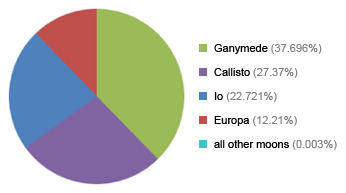
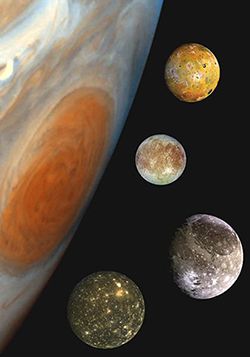
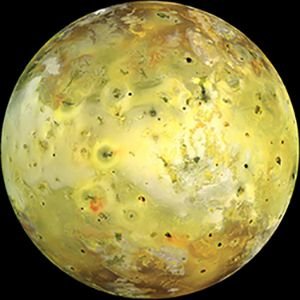
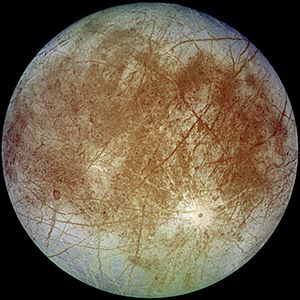
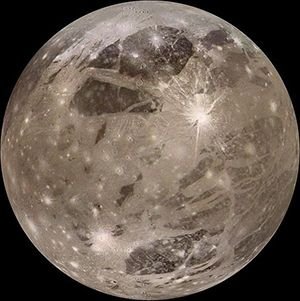
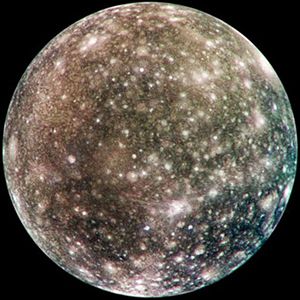
Yet another amazing article @agbona. I have always wondered why Jupiter has more than one moon orbiting around it. Am glad you wrote about this..
I am glad you find this helpful, and enjoyed reading it...many thanks
This was really nice to read, thank you for this article :)
These four moons are so big that they can be seen even with the cheapest DSLR camera or with the smallest telescope out there.
Honestly, I never knew a DSLR camera can be used as a makeshift telescope; I'll try that when next I lay my hands on one of them.
Glad you find this post interesting.
Great overview.
Ganymede has definitely peaked my interest. Does a magnetosphere mean an active core? And I was not aware that other planetary objects possess oxygen "rich" atmospheres. Definitely something I want to read into.
A Magnetosphere is a planet or solar body's internal magnetic field, solar wind plasma, and interplanetary magnetic field (IMF).
The Galilean moons would've been a possible destination for man, the only problem is the intense radiation and tidal forces from Jupiter. Callisto and Ganymede are likely destinations that can harbour life
And I think I'll do a post on the habitability of Moons
I think kudos should be given to Galileo for his discovery work on astronomy.However, my question is this do we have more than the one moon we see up there?. Forgive me if my question seems to be a medieval times one.😎
Yeah, Earth has only one moon.